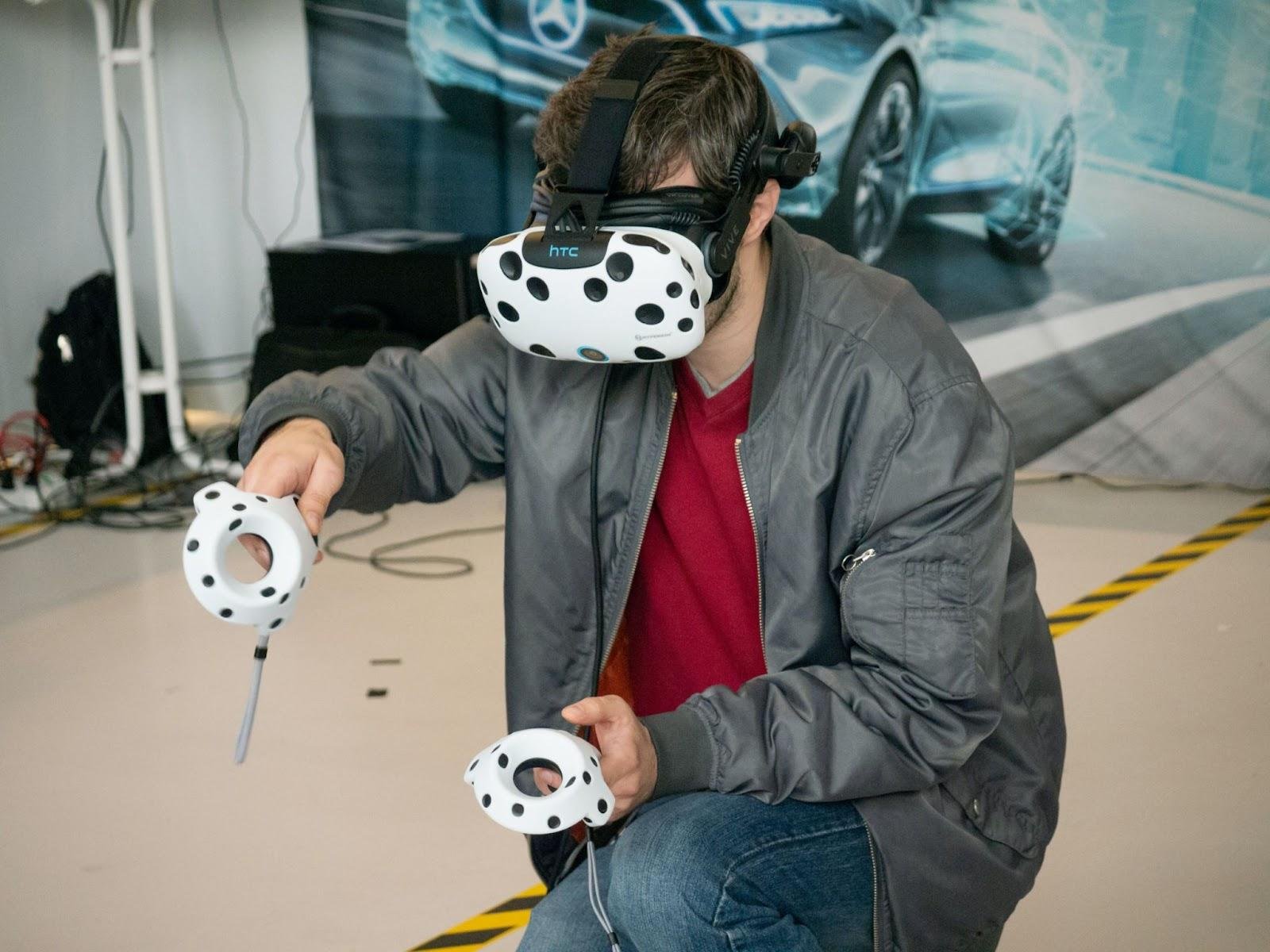Business and technology evolve together. Technology improves productivity, efficiency, and employee satisfaction while helping keep costs low for businesses and consumers. New technologies like VR help businesses succeed in an ever-changing, competitive landscape, but only if they can use them correctly.
Virtual reality (VR) may be trendy, but it’s a trend set to last as consumers change how they shop. Businesses are continuing to join and create virtual worlds and communities that improve the shopping experience and help consumers make purchasing decisions. But that’s not all. Let’s take a look at a few of the ways VR is changing the world of business:
-
Training and Education
Consumers don’t always see or understand the behind-the-scenes of a business. VR has facilitated better training and education for employees, giving them the opportunity to experience different situations before actually having to solve issues. For instance, surgeons in training can use VR to perform surgery without actually having a real, live patient. Or, flight simulations can also teach prospective pilots how to operate an aircraft without ever having to leave the ground.
Any and all employees can use VR for training, making it easier for them to understand certain material and how to handle different situations they might experience.
-
Data
VR is integrated into data analytics to make visualizing and understanding all the data businesses collect easier to understand through dashboards. By gathering data and using the numbers, VR enables business owners who aren’t data scientists to accurately interpret the information using images, videos, and other visualization techniques.
-
Product Development & Manufacturing
VR can improve product development and manufacturing, allowing you to develop prototypes without having the actual product in front of you. Manufacturers use VR throughout product development, including modeling, making the process easier for engineers and product developers. However, VR can also be used for marketing. For instance, you can use VR to showcase your various products.
-
Sales & Marketing
Sales and marketing must be properly aligned if you want to promote your organization’s growth. Letting customers see or try products before they buy them can facilitate sales, which is why physical shops are still popular even though there are more convenient options like e-commerce.
That said, not every business needs a physical retail store to create a good customer experience using VR. With VR, customers can try products like glasses, clothing, and makeup using various filters and technologies before buying them. In addition, other brands can create virtual showrooms as a way to let customers see and interact with the products before buying them.
VR can also be used to create ads and make brands more visible by creating virtual reality settings more effortlessly. Brands that embrace technology tend to stand out from their competitors, with many more companies using VR in marketing to create virtual showrooms and try-before-you-buy functionalities on their websites.
-
Introducing Products to Customers
Whether you have a new product or are entering a new market, VR can help. Creating virtual reality experiences allows you to introduce products to new customers more easily. For instance, with VR gloves, users can interact with virtual products using their hands.
This means you can introduce new products, let customers pick them up and try them before they purchase them, eliminating the need for in-person shopping trips and offering customers a new level of convenience they can experience in their homes.
Why Use VR in Business?
Virtual reality can help with almost every aspect of your business. However, most businesses already have processes in place that work for them. Why should they invest in the additional expense and time-consuming nature of integrating VR into their business processes? Here are a few benefits of using virtual reality in business:
The Competitive Edge
Businesses that use VR can stand out from their competitors by being more efficient and creating more cost-effective products. We live in a world where you can find the same or similar products from various companies. Businesses have a lot of competition, and almost no one is creating brand-new products. So how can you gain a competitive edge when your products and services aren’t necessarily competitive?
Modern audiences choose to purchase products from businesses they trust and those that use technologies that somehow improve the product. For instance, the more efficient your business is, the faster you can make products. This could translate to cost savings for your business, which are then passed on to the customer.
Efficiency
VR can make your business more efficient by saving time on various back-end processes. Saving time saves the business money, and technology allows you to accomplish more in less time. For instance, VR training for employees reduces the time it takes to train them and may be more effective than traditional training processes.
Challenges of VR in Business
Unfortunately, while VR has many benefits, it certainly has its drawbacks.
-
Price
-
Some businesses may find it too expensive. Implementing VR is costly, and small businesses likely won’t be able to afford it.
-
-
Early software stages
-
In addition, this technology is still in the early stages of development, so it might not be worth investing in it until we have more solutions available to business owners.
-
As VR evolves, it will become more cost-effective, so small businesses should not be deterred. Instead, they should stay current on current VR trends to determine the right time to invest. Can you benefit from trying before you buy virtual features now and waiting for training technologies down the line? If so, it may be worth it to consider the areas of your business that VR can make more efficient and effective.
Final Thoughts
More and more businesses are investing in VR, even if they’re not implementing it in every aspect of their company. For instance, you can use VR in sales and marketing but not in product development. As this technology continues to evolve and becomes more cost-effective, we expect to see more businesses invest in it.
Consumers should be prepared for new virtual experiences that allow them to interact with products from the comfort of their homes, more convenient shopping experiences, and personalization beyond what we currently have available.






Comments
0 comments